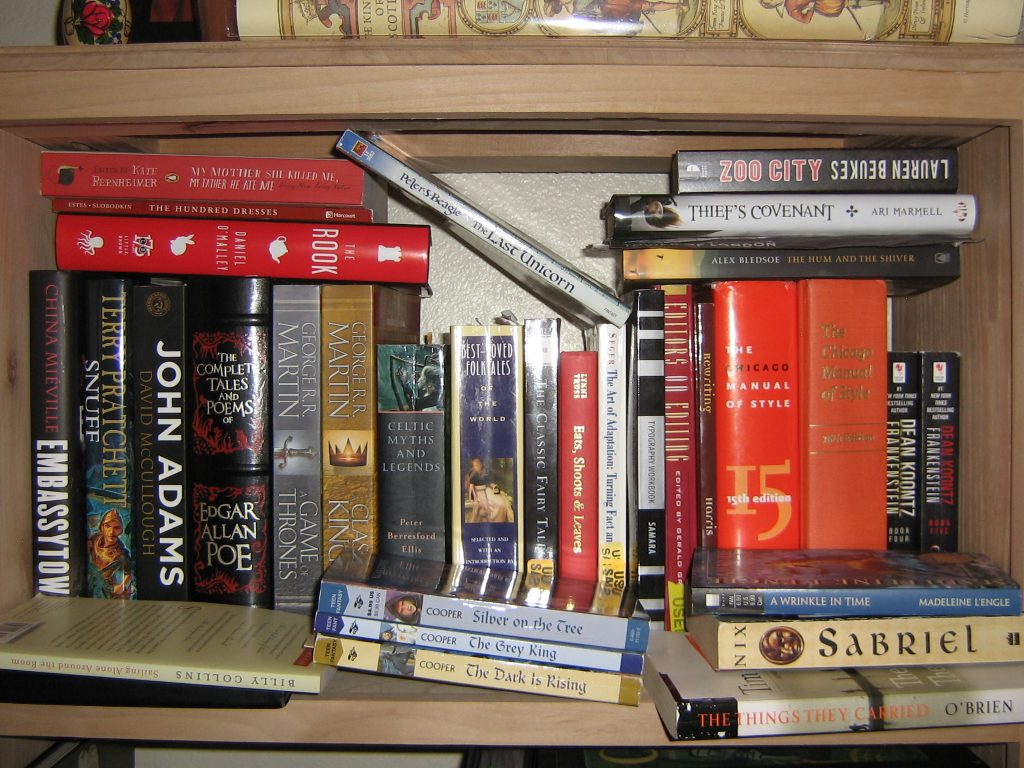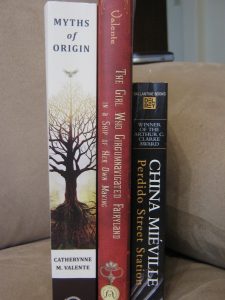September is a girl who longs for adventure. When she is invited to Fairyland by a Green Wind and a Leopard, well, of course she accepts. (Mightn’t you?) But Fairyland is in turmoil, and it will take one twelve-year-old girl, a book-loving dragon, and a strange and almost human boy named Saturday to vanquish an evil Marquess and restore order.
Not since Oz has there been a land—or a cast of characters—so rich and entrancing.
My last review was about a collection of Catherynne M. Valente’s shorter novels, and in this children’s novel, Valente retains her unique voice and mastery of language, but infuses it with veins of humor and whimsy. Where the other novels I reviewed are not books I would recommend for light reading, The Girl Who Circumnavigated Fairyland is something you can curl up with and enjoy along with a cup of hot chocolate.
Fairyland imitates a Victorian-style children’s novel, complete with a separate narrator character. However, the narrator and the novel’s circumstances have a modern flavor on the sly. The book consists of a series of small quests—retrieving a witch’s spoon, finding a magic sword, and freeing good friends from imprisonment—but they all flow together into a nice plot arch overall.
My favorite part of the book was probably A-through-L, the Wyvern whose father was a library (making him a Wyverary, to be more exact). He’s kindhearted and quirky, and he takes huge pride in his vast knowledge of all things that start with the letters A through L (he hasn’t had a chance to study the rest of the letters yet, though his siblings have the rest of the alphabet covered).
Ell, as September calls her Wyverary friend, is fairly typical of the rest of the settings and characters in Fairyland. Everything and everyone has a few targeted things they’re really good at, but they’re also specifically limited in interesting ways. Marids grant wishes, Leopards fly on the winds, and furniture over 100 years old comes to life. But Marids must be wrestled within an inch of their lives before wish-granting, some Leopards aren’t allowed in Fairyland, and most furniture has a pretty poor attitude after 100 years of abuse at various human hands.
And through it all, September goes from being a Somewhat Heartless human child to a Hardly Heartless hero with a host of Fairyland friends. All before her airplane mechanic mother notices she’s missing or her soldier father comes home from the war in Europe. For a twelve-year-old from Omaha, Nebraska, not a bad first visit to Fairyland.
Cover illustration by Ana Juan.







